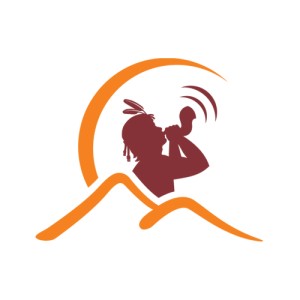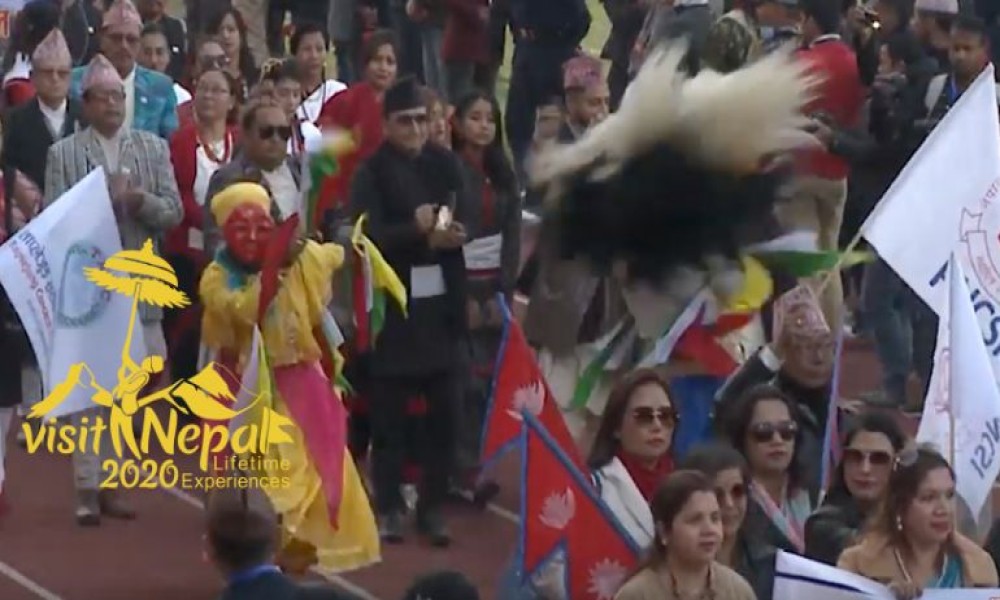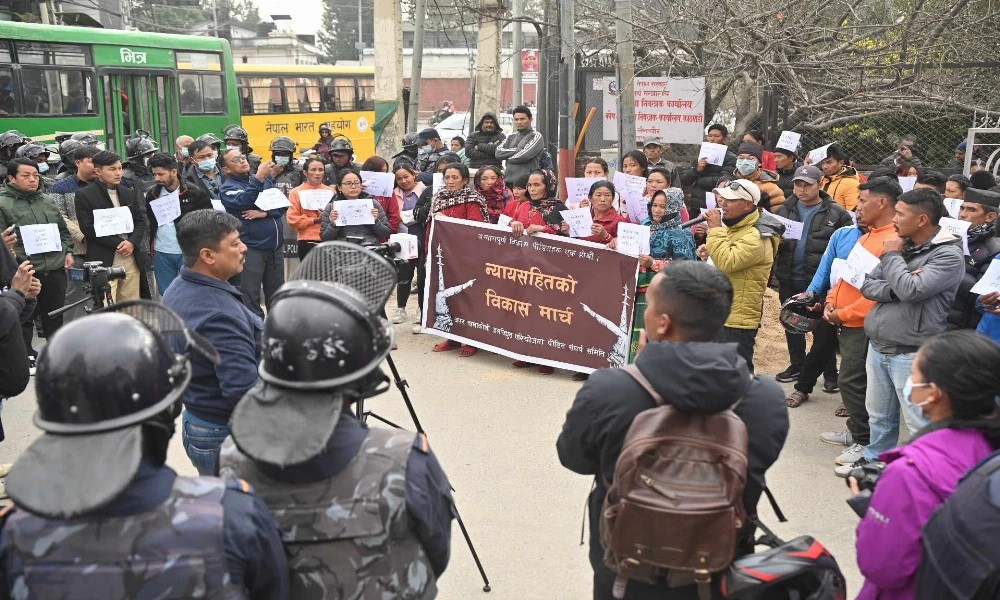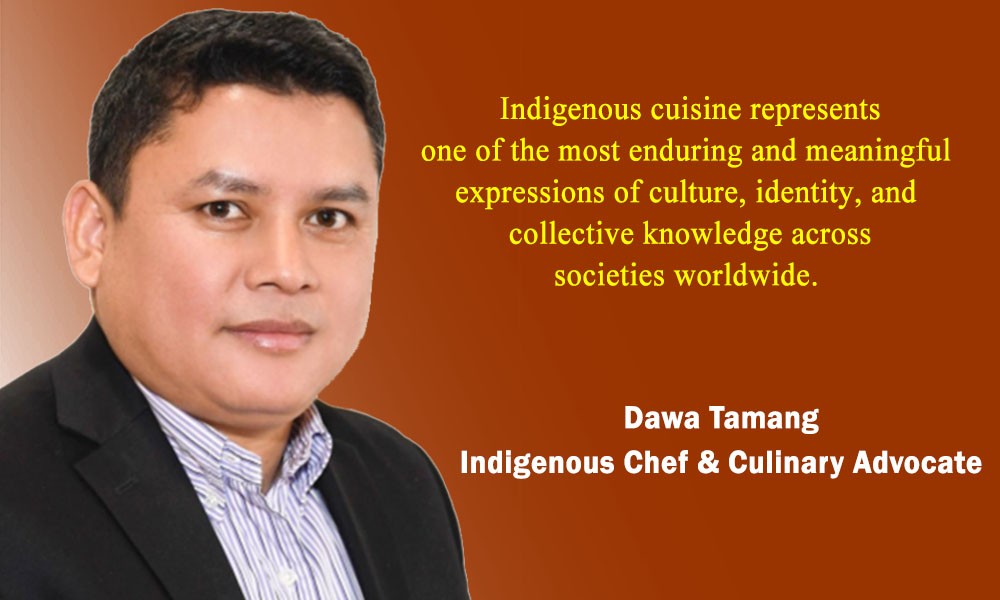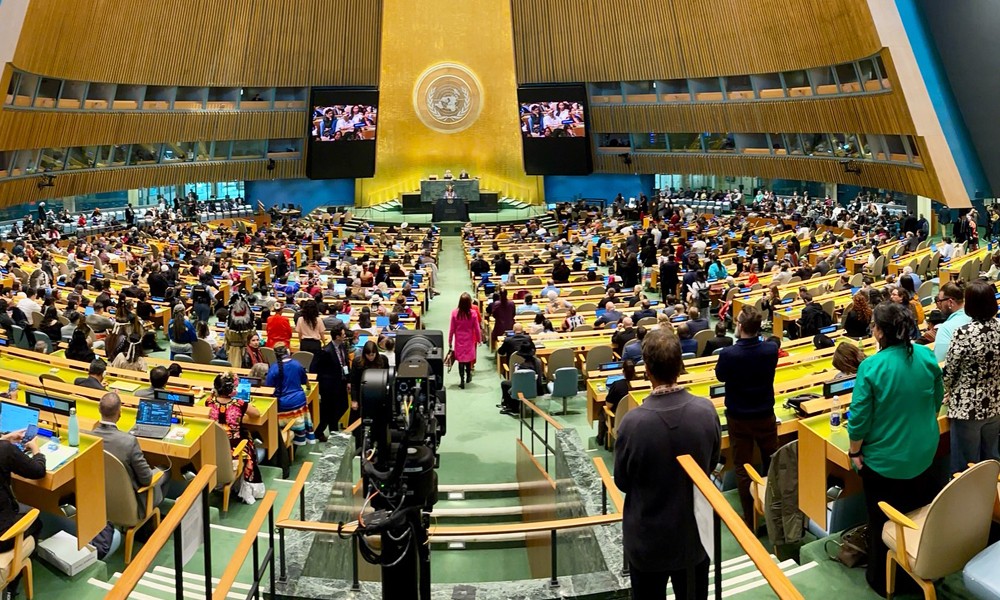MUNA MOKTAN in Ramechhap
As Visit Nepal 2020 gets underway, a question has arisen: is it good or bad for the country's indigenous peoples?
For some indigenous rights activists, it is an opportunity to showcase their rich culture and heritage. For others, it is just a continuation of the systematic discrimination they have been subjected to.
Indigenous rights activist Dr Som Dhimal says: "We have a repository of unique art, craft, culture and cuisines, which we can show to the world during Visit Nepal 2020".
But indigenous rights activist Samir Mukhiya Sunuwar has a different opinion. He says: "Even if we showcase our art and culture in front of tourists, we will not benefit much because Visit Nepal 2020 which lacks specific programs to highlight our identity".
Even if we showcase our art and culture in front of tourists, we will not benefit much because Visit Nepal 2020 which lacks specific programs to highlight our identity.
Visit Nepal 2020 was inaugurated by President Bidya Devi Bhandari amidst a ceremony at Tundikhel, Kathmandu on 1 January. On that platform, cultural troupes of various indigenous communities had displayed their art, attire and dances.
However, many indigenous rights activists feel their communities were used by the organisers of Visit Nepal 2020 just as 'entertainers', and not as 'stakeholders". Chari Maya Moktan, an indigenous businesswoman, says: "Even if Visit Nepal 2020 results in the arrival of hundreds of thousands of high-end tourists, only big hoteliers, airlines operators and tourism entrepreneurs will benefit from the tourism boom. Indigenous communities just run home stay and small hotels. High-end tourists will eat pizza and burger in star hotels, which our communities do not own".
However, mountaineer Pemba Sherpa says Visit Nepal 2020 is an important year for indigenous communities living in mountains. He says: "Some of the dollars spent by tourists definitely trickle down to indigenous communities. From craft to cuisine, we have a plenty of products that we can sell when tourists visit us".
Dr Som Dhimal agrees with Sherpa, saying that Visit Nepal 2020 will not be successful without contribution from and participation of indigenous communities. "In order to ensure indigenous people's participation in Visit Nepal 2020", he says: "There should be travel packages that take tourists to traditional villages of indigenous communities like Tharu, Dhimal, Satar, Tamang, Rai, Limbu and Gurung".
He adds: "If a tourist spends a night in a home stay run by an indigenous family, she might promote our art, culture and tradition in her country".
The government is using Indigenous Peoples of Nepal just as show-pieces, not as real stakeholders.
Indigenous rights activist Samir Sunuwar does not fully disagree with Dr Dhimal, but he says he is not very hopeful that the government will use Visit Nepal 2020 as an opportunity to uplift the economic status of indigenous communities by promoting their unique craft, cuisine and culture.
Sunuwar says the Tourism Ministry cared to consult Nepal Federation of Indigenous Nationalities (NEFIN) only a few days before the start of Visit Nepal 2020, which shows how serious the government is about linking the tourism year with the lives and livelihood of indigenous nationalities. He says: "So I have a strong feeling that the government is using our communities just as show-pieces, not as real stakeholders".
Visit Nepal 2020 is an ambitious scheme through which the government aims to bring in two million tourists by the end of the current fiscal year. There is little doubt over the importance of a Visit Nepal year, but indigenous rights activists say the government must ensure that all communities benefit from it.
Indigenous Feature Service


